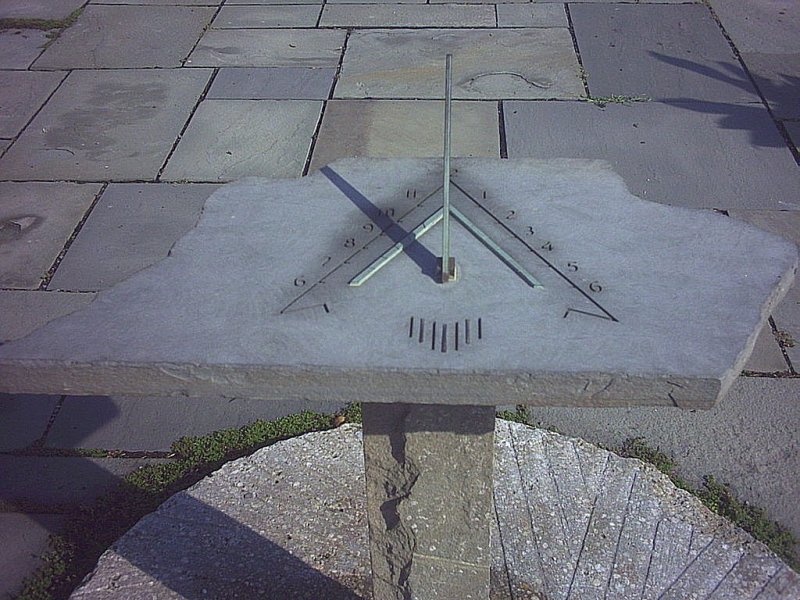Gnomon: Ancient Time Measuring Instrument Used By Babylonians, Egyptians And Chinese
A. Sutherland - AncientPages.com - A gnomon ("one that knows or examines") is the part of a sundial that casts a shadow.
The term has been used for many different purposes in mathematics, astronomy, and other fields. In the distant past, this vertical stick was called 'shadow stick,' but today, it is known as 'gnomon.'
A simple astronomic instrument, the 'gnomon' used to calculate the time, season, and so on) is composed of a vertical gnomon and a horizontal ruler. Image: Cultural China
It was probably the first device for indicating the time of day, dating from about 3500 BC. The length of the shadow this simple instrument cast gave an indication of the time of day.
Gnomon was known in Inca's Peru, megalithic Europe. In ancient China, the gnomon was a valuable instrument for astronomical observations throughout the centuries of Chinese civilization.
The instrument is mentioned in the 2nd-century' Nine Chapters on the Mathematical Art' as being used much earlier by the Duke of Zhou (11th century BC).
Pre-Socratic Greek philosopher Anaximander (610-546 BC) introduced the instrument to the Greeks. Greek mathematician (geometer) and astronomer, Oenopides (lived ca 450 BC) used the phrase drawn gnomon-wise to describe a line drawn vertically to another.
Garden sundial at 9:30am in the Robison Herb Garden, part of the F. R. Newman Arboretum at the Cornell University Plantations. Image credit: Gesslein - Public Domain
Hero of Alexandria defined the gnomon as a figure, when added to another figure, formed a similar figure to the original.
By the 8th century BC, more precise devices were in use.
At midday, the shadow of a stick is the shortest. This alignment was used by the civilizations of Mesopotamia, Egypt, and China as the North-South direction.
According to Egypt's hieroglyphic texts, an instrument was an L-shaped object with a short vertical arm and a long graduated horizontal arm, called 'setchat or merkhet' (device of knowledge.
Today, a three-dimensional gnomon is commonly used in CAD and computer graphics to aid in positioning objects in the virtual world.
Written by – A. Sutherland - AncientPages.com Senior Staff Writer
Updated on January 9, 2023
Copyright © AncientPages.com All rights reserved. This material may not be published, broadcast, rewritten or redistributed in whole or part without the express written permission of AncientPages.com
Expand for referencesMore From Ancient Pages
-
 The Curse Of Chief Chocorua Who Died On The Mountain That Bears His Name
Featured Stories | Mar 9, 2019
The Curse Of Chief Chocorua Who Died On The Mountain That Bears His Name
Featured Stories | Mar 9, 2019 -
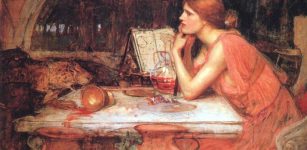 Medieval Magic – A Service Industry Used By Rich And Poor Alike
Featured Stories | Oct 29, 2019
Medieval Magic – A Service Industry Used By Rich And Poor Alike
Featured Stories | Oct 29, 2019 -
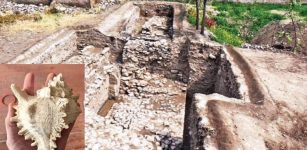 Second Gate Of Bazira And Unique Artifacts Discovered In The Ancient City Of Alexander The Great
Archaeology | Mar 29, 2022
Second Gate Of Bazira And Unique Artifacts Discovered In The Ancient City Of Alexander The Great
Archaeology | Mar 29, 2022 -
 New Interpretation Of The Domesday Book Of William I The Conqueror
News | Jan 16, 2021
New Interpretation Of The Domesday Book Of William I The Conqueror
News | Jan 16, 2021 -
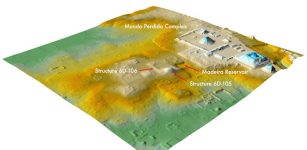 Hidden Ancient Citadel In The Mayan City Of Tikal Discovered By LIDAR
Archaeology | Sep 28, 2021
Hidden Ancient Citadel In The Mayan City Of Tikal Discovered By LIDAR
Archaeology | Sep 28, 2021 -
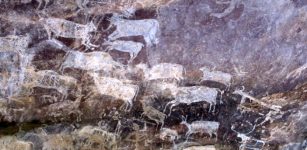 Bhimbetka: Gigantic Open Air Repository Of Prehistoric Art In India
Featured Stories | Jun 11, 2016
Bhimbetka: Gigantic Open Air Repository Of Prehistoric Art In India
Featured Stories | Jun 11, 2016 -
 Unpredictable Rainfall May Have Caused Disintegration Of Early Maya Societies
Archaeology | Apr 7, 2023
Unpredictable Rainfall May Have Caused Disintegration Of Early Maya Societies
Archaeology | Apr 7, 2023 -
 On This Day In History: Admiral Richard E. Byrd Made His First Flight Over The South Pole – On Nov 29, 1929
News | Nov 29, 2016
On This Day In History: Admiral Richard E. Byrd Made His First Flight Over The South Pole – On Nov 29, 1929
News | Nov 29, 2016 -
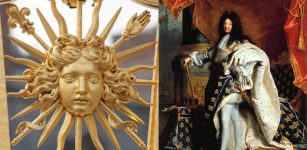 Why Was Louis XIV Called The Sun King?
Ancient History Facts | Jul 11, 2019
Why Was Louis XIV Called The Sun King?
Ancient History Facts | Jul 11, 2019 -
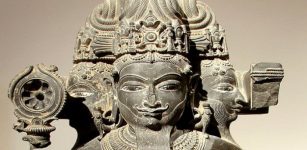 Brahma: First God In Hindu Trimurti, Creator Of The World And All Creatures
Featured Stories | Apr 17, 2019
Brahma: First God In Hindu Trimurti, Creator Of The World And All Creatures
Featured Stories | Apr 17, 2019 -
 Ancient Tombs Arranged In The Image Of A Galaxy Discovered In Sudan
Archaeology | Jul 8, 2021
Ancient Tombs Arranged In The Image Of A Galaxy Discovered In Sudan
Archaeology | Jul 8, 2021 -
 The Maasai Legend Of Hero Lakalanga And His Ancient Footprints
African Mythology | Jul 12, 2019
The Maasai Legend Of Hero Lakalanga And His Ancient Footprints
African Mythology | Jul 12, 2019 -
 Sweden’s Tanum And Skredsvik Petroglyphs: Thousands Of Spectacular And Intriguing Rock Art
Featured Stories | Aug 28, 2018
Sweden’s Tanum And Skredsvik Petroglyphs: Thousands Of Spectacular And Intriguing Rock Art
Featured Stories | Aug 28, 2018 -
 4,000-Year-Old Temple With Mysterious Large Monolith Discovered In Cyprus
Archaeology | Jul 10, 2024
4,000-Year-Old Temple With Mysterious Large Monolith Discovered In Cyprus
Archaeology | Jul 10, 2024 -
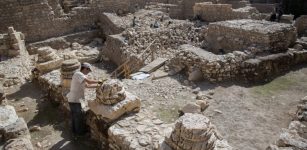 Ancient Mystery Of Acra Citadel – Solved
Archaeology | Nov 3, 2015
Ancient Mystery Of Acra Citadel – Solved
Archaeology | Nov 3, 2015 -
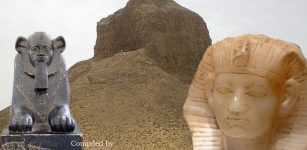 The Black Pyramid Of Amenemhat III – Mysterious Underground Chambers And Lost Ancient Treasures
Featured Stories | Aug 9, 2021
The Black Pyramid Of Amenemhat III – Mysterious Underground Chambers And Lost Ancient Treasures
Featured Stories | Aug 9, 2021 -
 Khara-Khoto ‘Black City’ – Besieged By Genghis Khan But Flourished Under Mongol Rule
Featured Stories | May 13, 2021
Khara-Khoto ‘Black City’ – Besieged By Genghis Khan But Flourished Under Mongol Rule
Featured Stories | May 13, 2021 -
 Mystery Of The Banshee – Is The Celtic Death Messenger Linked To The Tuatha De’Dannan Race?
Celtic Mythology | Oct 25, 2015
Mystery Of The Banshee – Is The Celtic Death Messenger Linked To The Tuatha De’Dannan Race?
Celtic Mythology | Oct 25, 2015 -
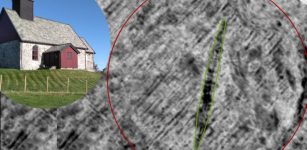 Edøy Discovery: Traces Of 1,000-Year-Old Ship Burial Detected In Norway
Archaeology | Nov 24, 2019
Edøy Discovery: Traces Of 1,000-Year-Old Ship Burial Detected In Norway
Archaeology | Nov 24, 2019 -
 The Enigma Of The ‘Ancient Ones’, The Anasazi Cliff-Dwellers Of The Southwestern United States
Ancient Mysteries | Apr 9, 2017
The Enigma Of The ‘Ancient Ones’, The Anasazi Cliff-Dwellers Of The Southwestern United States
Ancient Mysteries | Apr 9, 2017


